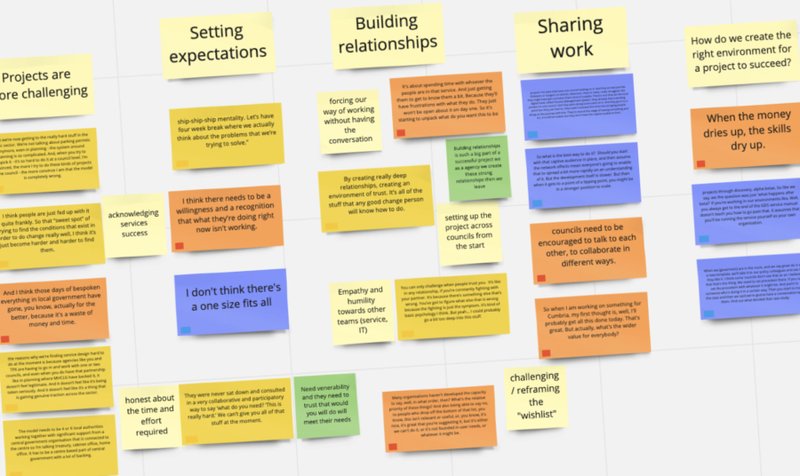The environment in which we practise service design is complex and constantly shifting. Each new project provides opportunities to learn and adapt. Ali Blake, one of our service designers, has recently worked on two such projects, each with its own set of challenges.
The first, a long running project to replace legacy back-office planning systems, has made slow and steady progress, with a clear focus on effective collaboration across multiple councils but is taking time to become a full end-to-end service.
The second, a project to create a new brokerage management system within adult social care, has been focussed on a small set of specialist users within a single council, but is under enormous pressure to deliver a working product in a very short period of time.
As Ali reflected on her learnings and how she could best share them with others, she and Unboxed colleague Kassie Paschke talked to six digital leads and designers within local government, to ask the question:
'How might we optimise the environment for service design to succeed in local government?'

The work is still in progress, but here are some emerging themes:
Universal barriers to success
It is clear from this research that there are some common challenges. These include:
- a lack of clarity around an overall vision for the service or team
- uncertainty around budgets and how to access them
- poorly aligned expectations around the necessary timeframes
- poor internal communication in the build up to and during the project
"We're now getting to the really hard stuff in the public sector. We’re not talking about parking permits anymore. [...] The more I try to do these kinds of projects in one council - the more convinced I am that the model is completely wrong."
Transformation leader
Overcoming these barriers
Some initial thoughts around how to overcome these barriers centred around relationship building. Regular communication in open channels such as Slack helps with this but humility and empathy are needed to really build trust with stakeholders. Establishing the scope of the project with them at the start of the journey and being prepared to respectfully challenge assumptions is also key. The funding and budgeting issues remain a challenge of course, but these things will help.
"A clear and consistent vision, and having that really clearly communicated, and with accessible messages that other people can communicate, really helps. Setting expectations, in terms of behaviours and letting people know what the near future, mid term and long term look like, and where the uncertainty is going to be."
Digital leader
Defining success
A fundamental but crucial first step is to create a shared understanding of your success criteria. For some, these include quite intangible outcomes such as ‘culture change’ or ‘a shift in mindset’, whilst for others (often those in control of budgets), they are far more tangible and must be quantified. Finding the balance between these is hard.
"Success is that you get every stakeholder as happy or as close to happiness as you can. That means that the people that are making the decisions high up and the people that are doing the day-to-day work as well as the users of the service."
Service designer
Next steps
Whilst Ali and Kassie wrap up this research, we’ll be discussing some of the themes with other members of Unboxed’s design team and guests in an upcoming Thoughts Unboxed podcast. If you feel you have something to contribute, let us know using the social links below.
Ali will also be leading a workshop in collaboration with our friends from Live|Work at Service Design in Government to identify other barriers and how we might navigate them. We’d love to see you there.

